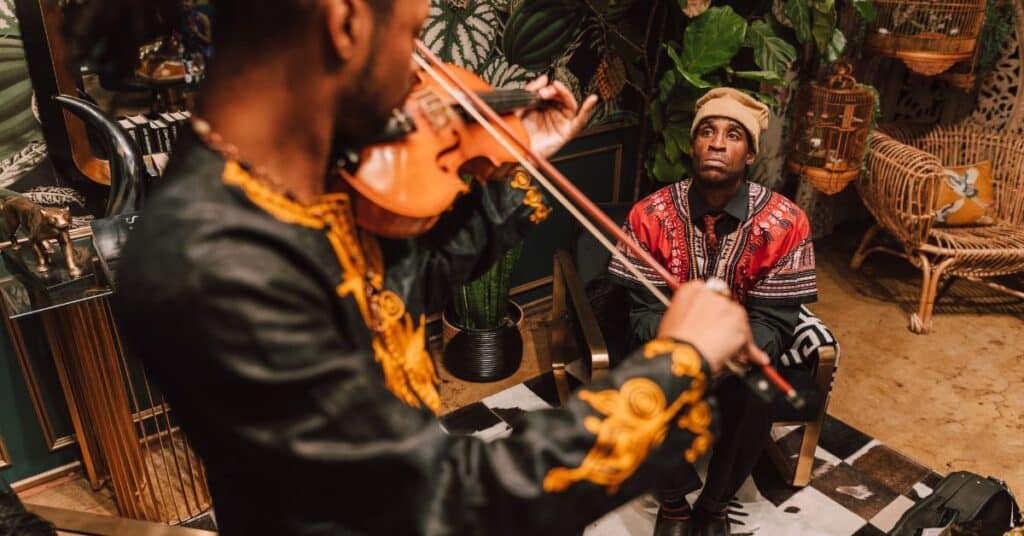The Psalter: Middle Ages Musical Heritage, everyone needs to be aware of the Middle Ages’ musical heritage.
An incredible amount of work has been done worldwide to preserve and recover each country’s indigenous instruments.
And a sizable portion of the medieval musical legacy is still alive in Europe, particularly in Spain.
The Psalter is a great illustration.
This stringed instrument has recently continued to be performed in some areas, where it is an integral part of many of its most significant traditional cultural representations.
This article will discuss the definition of a psalter and its history and traits.
Do You Intend To Follow Me?
The psaltery is what?
Although it peaked hundreds of years ago, specifically in the Middle Ages, the Psalter is a plucked or percussive string instrument still used in many parts of the world.
This is the Psalter:
Background of the Psalter
The Psalter was originally shown in European sculptures and drawings in the eleventh century. The instrument itself, though, is Greek in origin.
It was a little different then, more harp-like, circa 320 B.C. But it changed over time. Another antecedent, a sculpture of a psalter from the fourteenth century, originates in Asia, more specifically from Japan.
The game is still played today all around the world.
In reality, it plays a significant role in the folk music of several autonomous communities in Spain, including Aragon, known as “chicotén,” and Navarre and the Basque Country, where it is known as “tun-tun.”
The Psalter’s Characteristics
The Psalter is made entirely of a flat soundboard, which serves as the instrument’s body. The Psalter differs from other common stringed instruments like the guitar or bass because it lacks a mast.
It is simple to recognize because of this, among other things. Additionally, the box’s trapezoidal or triangular shape contributes to some of its personality.
The strings, originally constructed of metal, extend from this soundboard. These are distributed in pairs for each note and run from one end of the box to the other.
The strings can be struck with sticks or a metal rod or pressed directly with the fingers or finger picks, such as those used in the fingerstyle guitar.
That is why it can be a percussion or plucked string instrument.
Medieval And Renaissance Psalters
One could argue that the Psalter’s heyday occurred between the twelfth and fifteenth centuries.
It is typically inferred that most of the Psalter’s depictions in manuscripts, paintings, and sculptures throughout Europe date to that period.
These psalters were, therefore, the most well-known and often used ones.
It should be noted that the shape utilized changes based on the area or the intended use.
Similar to how it was typical to find models with pairs of strings for each note, they may also be produced in orders of three strings.
The Modern Psalter
The psaltery fell into disuse during the nineteenth century. But, as I mentioned, it is still used in many regions. Hence the musical styles of the Psalter can cover a very wide range.
Guess which ones?
One of them is Mexico. The Mexican Psalter is an instrument that can create beautiful melodies and harmonies, watch this video of a quartet of Mexican Psalters.
It is also true that today there are many instruments related to the Psalter, such as the dulcémele, the santur, the Hungarian cymbal, the yangqin, and the khim, which are very similar.
So much so that even experts do not know which one is represented in different manuscripts and paintings.
Today, one of the most interesting evolutions of this string instrument has been toward the bow psalter. This is played by rubbing the strings with a bow instead of pressing or hitting them.
The Psalter In Aragon: The Chicotén
Although it is not a modern version of the Psalter, one that originated and had its great boom during the Middle Ages, the chicotén is a typical Aragonese instrument that remains in use to this day.
In the area of the Aragonese Pyrenees, it is still used in the ritual dances of areas such as Aragües del Puerto, Jaca, Jasa, and Yebra de Basa.
There he accompanies other instruments such as the chiflo.

